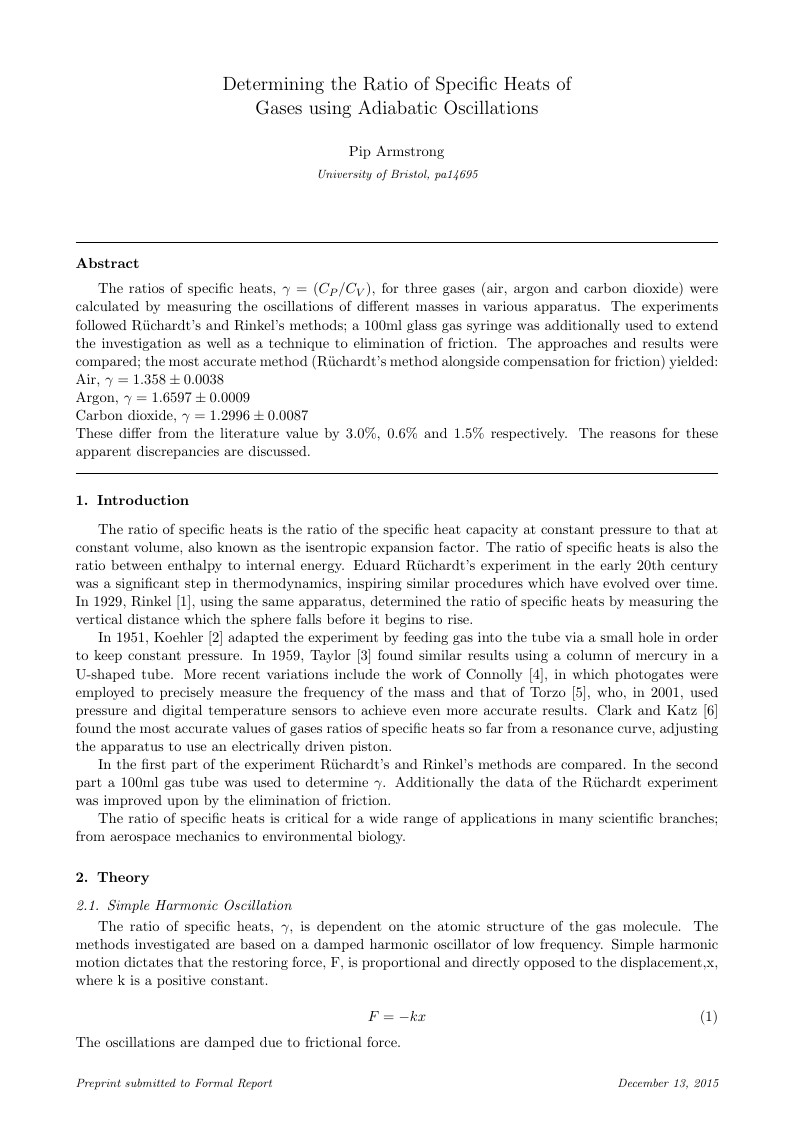
Determining the Ratio of Specific Heats of\\ Gases using Adiabatic Oscillations
Autor:
Pip Armstrong
Letzte Aktualisierung:
vor 10 Jahren
Lizenz:
Creative Commons CC BY 4.0
Abstrakt:
The ratios of specific heats, γ = (CP/CV), for three gases (air, argon and carbon dioxide) were calculated by measuring the oscillations of different masses in various apparatus. The experiments followed Rüchardt's and Rinkel's methods; a 100ml glass gas syringe was additionally used to extend the investigation as well as a technique to elimination of friction. The approaches and results were compared; the most accurate method (Rüchardt's method alongside compensation for friction) yielded:
- Air, γ = 1.358 ± 0.0038
- Argon, γ = 1.6597 ± 0.0009
- Carbon dioxide, γ = 1.2996 ± 0.0087
These differ from the literature value by 3.0%, 0.6% and 1.5% respectively. The reasons for these apparent discrepancies are discussed.

\begin
Discover why over 20 million people worldwide trust Overleaf with their work.